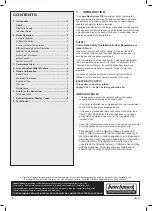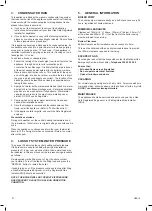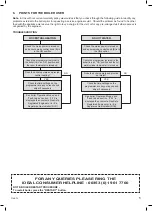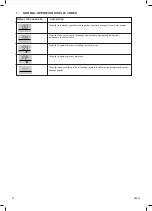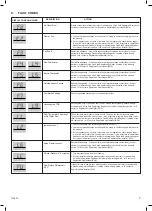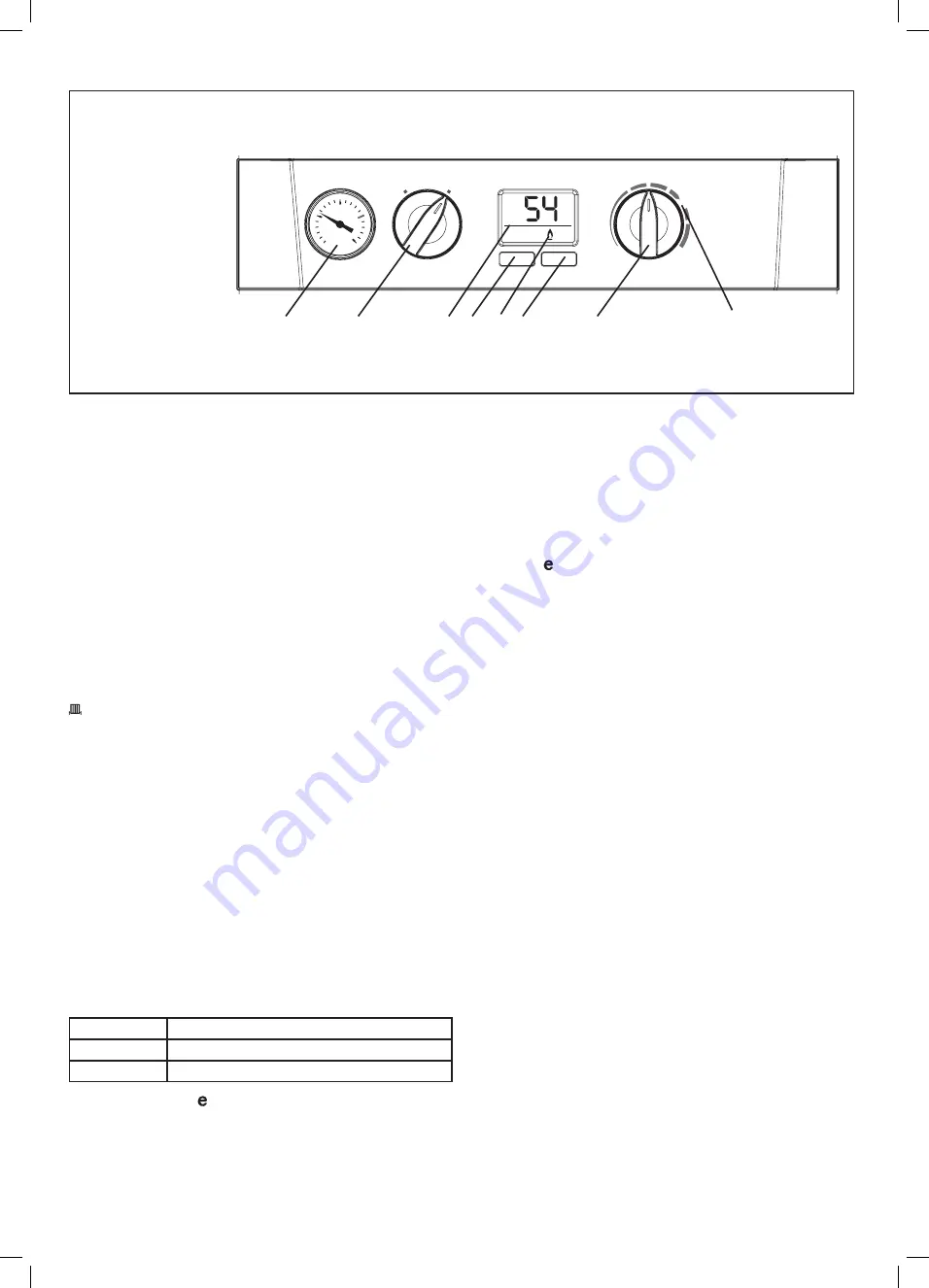
3
User’s
TO START THE BOILER
If a programmer is fitted refer to separate instructions for the
programmer before continuing.
Start the boiler as follows:
1.
Check that the electricity supply to boiler is off.
2.
Set the mode knob (B) to ‘
BOILER
OFF
’.
3.
Set the Central Heating temperature knob (A) to ‘
MAX
’.
4.
Switch on electricity to the boiler and check that all external
controls, e.g. programmer, room thermostat and hot water
cylinder thermostat are on.
5.
Set the mode knob (B) to ‘
BOILER ON
’.
The boiler will commence ignition sequence, supplying heat to the
central heating, if required.
Note.
In normal operation the boiler status display (C) will show codes:
00
Standby - no demand for heat.
Central Heating being supplied
FP
Boiler frost protection
- boiler will fire if temperature is below 5ºC.
During normal operation the burner on indicator (D) will remain
illuminated when the burner is lit.
Note: If the boiler fails to light after five attempts the fault code
L 2
will be displayed (refer to Fault Code page).
To Turn Off
Set the mode knob (B) to ‘
BOILER OFF
’.
CONTROL OF WATER TEMPERATURE
The boiler controls the central heating radiator temperature to a
maximum of 80
o
C, adjustable via the central heating temperature
knob (A).
Approximate temperatures for central heating:
Knob Setting Central Heating Radiator Temperature (approx.)
Minimum
30ºC
Maximum
80ºC
For economy setting ‘
’ refer to Efficient Heating System
Operation.
2.
BOILER OPERATION
EFFICIENT HEATING SYSTEM OPERATION
The boiler is a high efficiency, condensing appliance which will
automatically adjust its output to match the demand for heat.
Therefore gas consumption is reduced as the heat demand is
reduced.
The boiler condenses water from the flue gases when
operating most efficiently. To operate your boiler efficiently
(using less gas) turn the central heating temperature knob
(A) to the ‘ ‘ position or lower. In winter periods it may be
necessary to turn the knob towards the ‘
MAX
’ position to meet
heating requirements. This will depend on the house and
radiators used.
Reducing the room thermostat setting by 1ºC can reduce gas
consumption by up to 10%.
WEATHER COMPENSATION
When the Weather Compensation option is fitted to the system
then the central heating temperature knob (A) becomes
a method of controlling room temperature. Turn the knob
clockwise to increase room temperature and anti-clockwise
to decrease room temperature. Once the desired setting has
been achieved, leave the knob in this position and the system
will automatically achieve the desired room temperature for all
outside weather conditions.
BOILER FROST PROTECTION
If the system includes a frost thermostat then, during cold
weather, the boiler should be turned OFF at the programmer
(if fitted) ONLY. The mains supply should be left switched ON,
with the boiler thermostat left in the normal running position.
If no system frost protection is provided and frost is likely
during a short absence from home it is recommended to leave
the heating controls (if fitted) at a reduced temperature setting.
For longer periods, the entire system should be drained.
BOILER RESTART
To restart the boiler, when directed in the listed fault codes
(see section 8) press the “RESTART” button (F). The boiler
will repeat its ignition sequence. If the boiler still fails to start
consult a Gas Safe Registered Engineer or an IE Registered
Gas Installer (RGII).
MAINS POWER OFF
To remove all power to the boiler the mains power switch must
be turned off.
Legend
A. CH temperature control
B. Mode Control Knob
C. Boiler Status
D. Burner ‘on’ indicator
E. Function Button
F. Restart Button
G. Pressure Gauge
H. Central Heating
Economy Setting
ºC
ON
A
B
E
C
D
MIN
e
RESTART
MAX
BOILER
OFF
BOILER
ON
G
B
C
D
E
F
A
H
Summary of Contents for LOGIC SYSTEM S18IE
Page 8: ......


